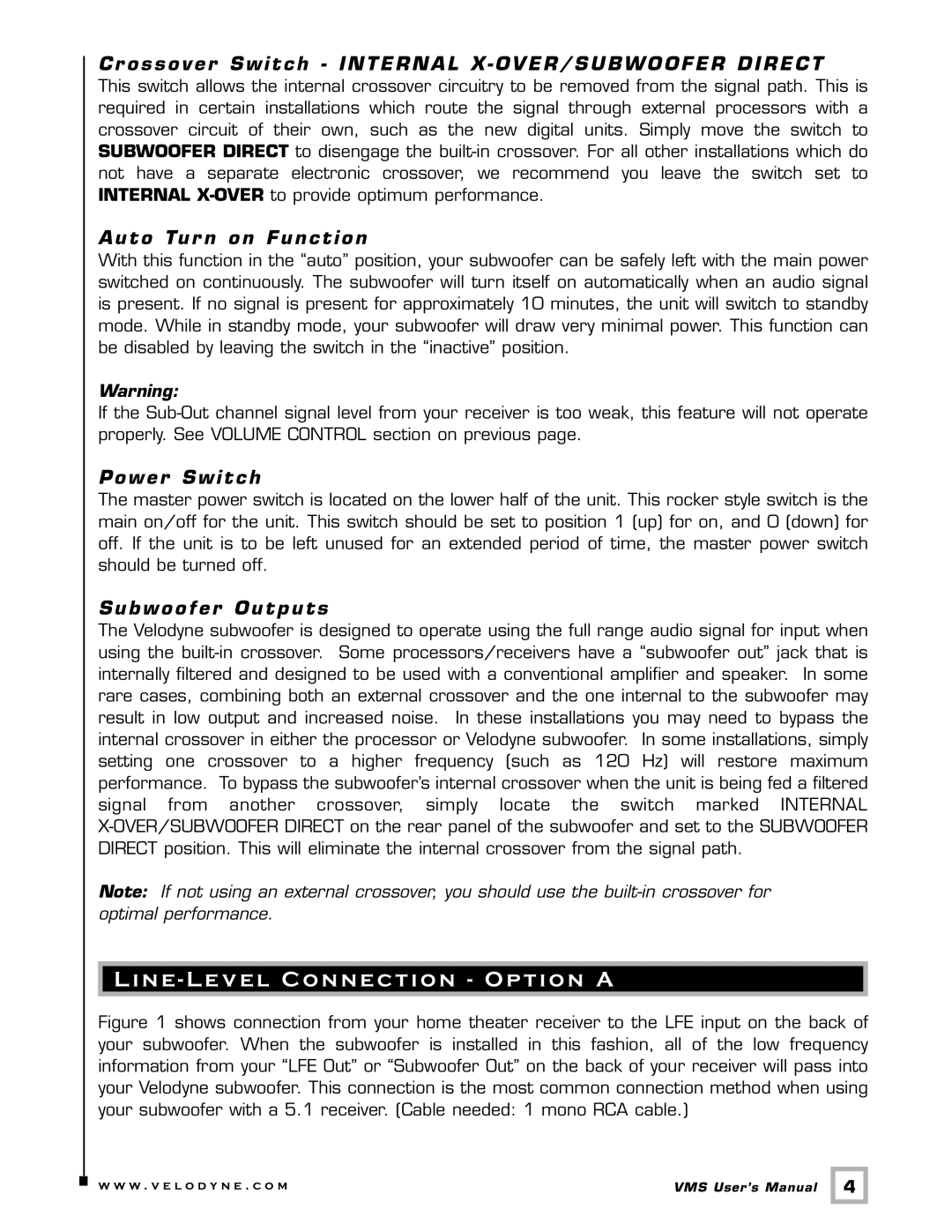VMS-8 specifications
The Velodyne Acoustics VMS-8 is a prominent model in the realm of professional audio systems, designed specifically for high-quality sound reproduction in various settings, including home theaters, commercial spaces, and professional venues. This versatile speaker system combines advanced technology with a commitment to delivering crystal-clear audio, making it a preferred choice for audiophiles and professionals alike.One of the standout features of the VMS-8 is its innovative driver design. It is equipped with an 8-inch high-efficiency woofer that provides powerful, deep bass response while maintaining clarity across a broad frequency range. The woofer is complemented by a precision-engineered tweeter that delivers crisp and clear high frequencies, resulting in a well-balanced sound profile. This two-way configuration ensures that the speaker can handle everything from the subtle nuances of classical music to the thunderous explosions of action films.
The VMS-8 utilizes Velodyne’s patented Digital Signal Processing (DSP) technology, which optimizes audio performance by intelligently adjusting the sound output according to the acoustics of the room. This feature ensures that users experience consistent audio quality, regardless of the environment. Additionally, the DSP allows for multiple equalization presets, enabling users to tailor the sound characteristics to their preferences or specific listening situations.
Another key characteristic of the VMS-8 is its robust construction. The speaker is housed in a solid enclosure designed to minimize resonance and standing waves, providing pure and uncolored sound reproduction. The front baffle is built from high-density MDF, which helps in preventing vibrations that could distort the audio signal. Furthermore, the cabinet features a sleek and modern design, making it an aesthetically pleasing addition to any setup.
Connectivity options for the VMS-8 are extensive, supporting both wired and wireless connections. It features multiple input options, including XLR, TRS, and RCA, making it compatible with a wide range of audio sources, from mixers to digital audio workstations. The unit also includes Bluetooth functionality, allowing for effortless streaming from mobile devices, an essential feature for modern listening habits.
In conclusion, the Velodyne Acoustics VMS-8 stands out for its combination of advanced driver technology, DSP capabilities, robust design, and versatile connectivity. Whether used in a home theater, studio, or commercial application, the VMS-8's comprehensive feature set ensures an immersive audio experience that meets the demands of discerning listeners.

